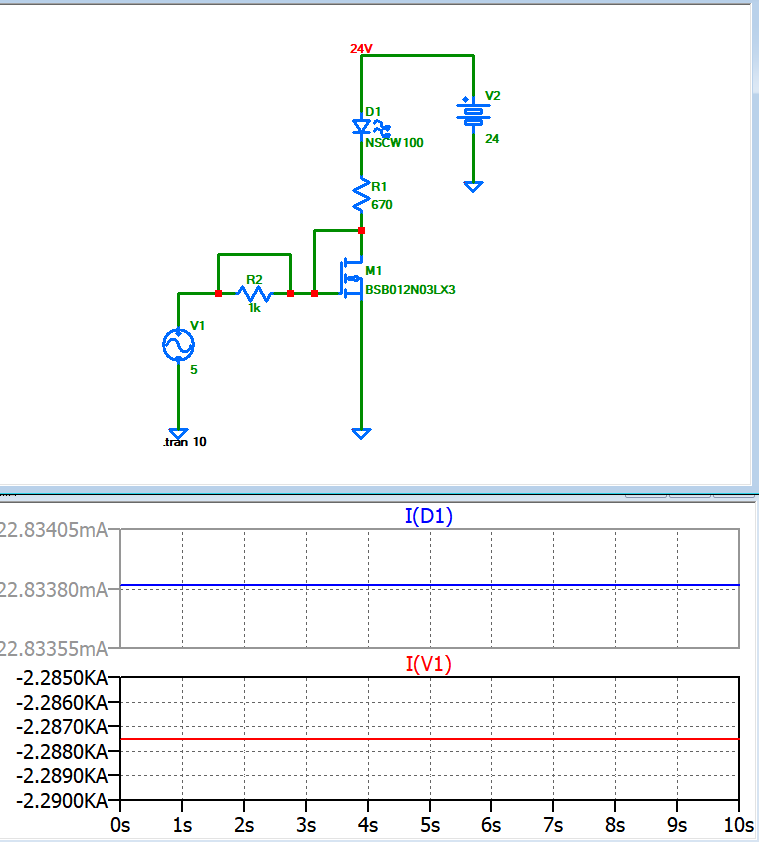I am just confused about understanding a simple concept.
For the following circuit:
Say the blue line acts as a short for whatever reason. If the LED has a forward voltage drop of 23 V and forward current of 30mA (LED contains everything it needs for this example (as in resistor is inside just for this example))
If we don't have a resistor and just a wire connecting the MCU to the mosfet, when the short occurs will the current still remain at 30 mA? As in the current would not become infinite/very large? Essentially nothing will change except the current will be continuously entering the MCU pin and could potentially blow teh MCU if the 30mA exceeded its rating?
In short: Essentially I just want to know that if a short occurred over the mosfet and say the MCU pin was low for that state, will the current remain the same at 30mA due to the limiting resistor of the LED. As in that's all that would happen (and obviously that the MCU will always have current going into it)




